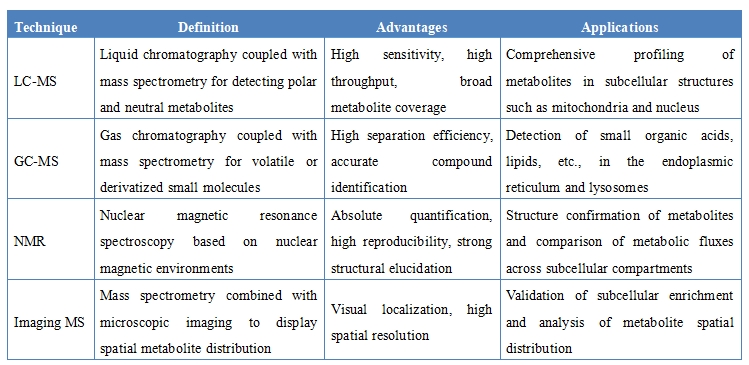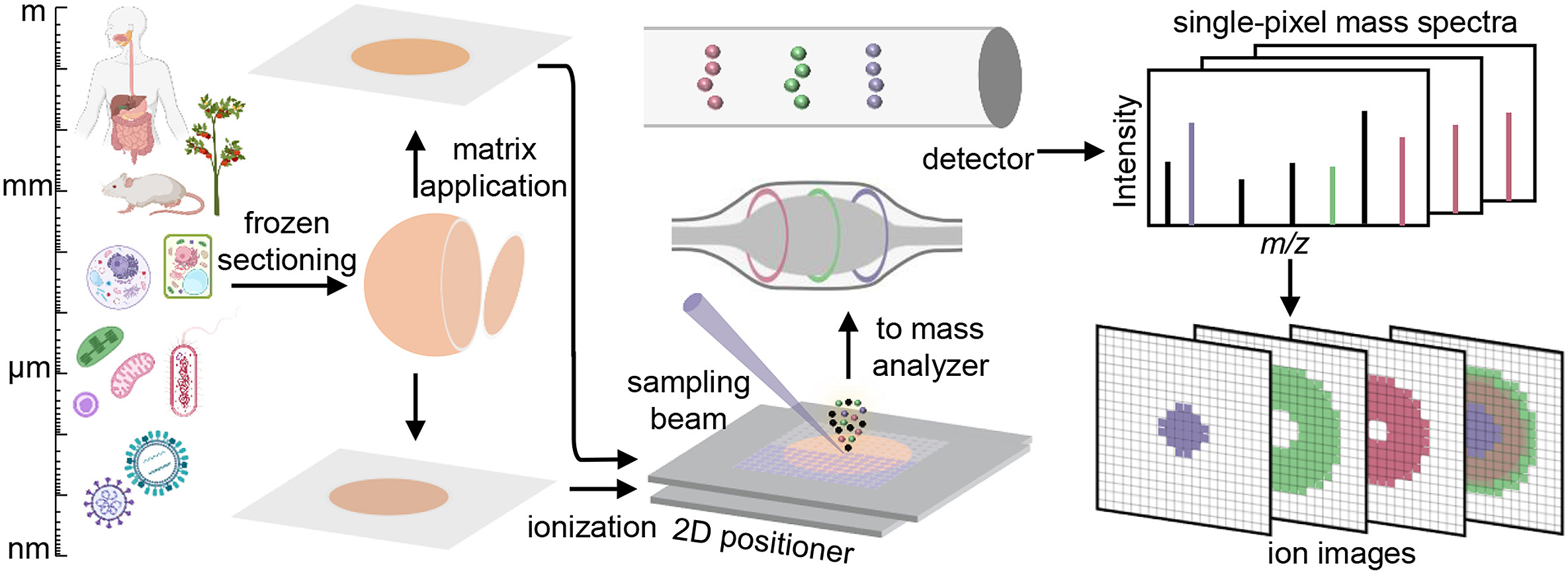Subcellular Untargeted Metabolomics Service
Subcellular untargeted metabolomics analysis is a research approach that utilizes high-resolution mass spectrometry to comprehensively analyze the composition and variation of metabolites within different subcellular structures (such as mitochondria, nucleus, and cytosol) without predefining target compounds. This technique involves subcellular fractionation, metabolite extraction, and mass spectrometric detection, combined with data-driven statistical analysis and metabolic pathway interpretation, enabling the comprehensive capture of both known and unknown metabolites.
Subcellular untargeted metabolomics service is applicable to research areas such as cancer, neurodegenerative diseases, metabolic disorders, and drug response mechanisms. It facilitates the discovery of novel metabolic biomarkers, the characterization of local metabolic reprogramming, and the elucidation of the roles of various subcellular compartments in biological processes, thereby providing strong support for mechanistic studies and precision medicine development.
Services at MtoZ Biolabs
Leveraging high-resolution mass spectrometry platforms, MtoZ Biolabs has launched the subcellular untargeted metabolomics service focusing on comprehensive profiling of metabolites within distinct subcellular structures such as mitochondria, nucleus, and endoplasmic reticulum. This service employs an untargeted analysis strategy without the need to predefine target metabolites, combining subcellular fractionation with advanced metabolite extraction techniques to capture both known and potentially unknown metabolites. The final output includes high-throughput, broad-coverage metabolic profiles that support pathway analysis, metabolic network construction, and differential metabolite screening, facilitating disease mechanism exploration and the identification of novel metabolic biomarkers. Commonly used technology platforms include, but are not limited to, the following:

Analysis Workflow
1. Sample Preparation and Cell Lysis
Cells or tissues are processed using mild lysis methods to preserve the integrity of subcellular structures and prevent metabolite degradation.
2. Subcellular Structure Isolation
Mitochondria, nucleus, endoplasmic reticulum, and other compartments are efficiently separated using differential centrifugation, density gradient centrifugation, or immunomagnetic bead techniques.
3. Metabolite Extraction
Metabolites within each subcellular fraction are rapidly extracted using pre-chilled organic solvents, simultaneously quenching metabolic activity to preserve the native metabolic state.
4. Untargeted Mass Spectrometry Detection
High-resolution platforms such as LC-MS, GC-MS, or NMR are used to perform comprehensive metabolite profiling, capturing both known and unknown metabolites.
5. Data Analysis and Pathway Mining
Metabolite identification, differential analysis, and pathway enrichment are carried out using curated metabolic databases and multivariate statistical methods.

Ma, S Y. et al. TrAC Trends in Analytical Chemistry, 2023.
Figure 1. General Overview of the MSI Workflow.
Sample Submission Suggestions
1. Sample Types
Applicable to a wide range of sample types, including plant or animal tissues, cells, model organisms, and biofluids. Samples should be processed under sterile conditions, and repeated freeze–thaw cycles should be avoided.
2. Sample Transportation
All samples must be shipped on dry ice to maintain low-temperature conditions throughout transit. For pre-extracted metabolites, please indicate the solvent used and its concentration.
3. Additional Notes
If subcellular fractionation cannot be performed by the client, MtoZ Biolabs offers standardized separation and processing services. Detailed sample preparation guidelines are available upon request. Early consultation is recommended to optimize experimental design.
Service Advantages
1. Comprehensive Metabolite Coverage
By integrating high-resolution platforms such as LC-MS, GC-MS, and NMR, this service enables the broad-spectrum detection of both known and unknown metabolites across various subcellular structures.
2. Spatially Resolved Metabolic Profiling
Through precise isolation of organelles like mitochondria and nucleus, combined with untargeted analysis, the service reveals spatial metabolic heterogeneity and region-specific functional insights.
3. In-Depth Data Interpretation
Supported by multivariate statistical tools, pathway enrichment, and functional annotation, the service facilitates the identification of key metabolic pathways and potential biomarkers.
4. Flexible and Customizable Workflow
Compatible with diverse sample types, the analytical process can be tailored to specific project goals, making it suitable for basic research, disease mechanism studies, and drug discovery applications.
Applications
1. Disease Mechanism Research
Subcellular untargeted metabolomics service enables comprehensive analysis of metabolic abnormalities within subcellular structures under conditions such as cancer, neurodegenerative diseases, and metabolic disorders, helping to uncover key pathways and potential therapeutic targets.
2. Environmental Stress and Metabolic Adaptation
Under conditions like hypoxia, oxidative stress, or nutrient deprivation, this service analyzes metabolic changes across different subcellular regions, revealing cellular adaptation mechanisms to environmental changes and supporting the study of stress responses and metabolic reprogramming.
3. Cellular Function Regulation
Subcellular untargeted metabolomics service is applicable for investigating dynamic metabolic shifts in subcellular compartments during biological processes such as cell proliferation, apoptosis, and autophagy, helping to elucidate underlying molecular regulatory mechanisms.
4. Biomarker Discovery
By mining multidimensional metabolic data, the service identifies subcellular-specific metabolites as potential biomarkers for early disease prediction and personalized medicine research.
FAQ
Q1: What Subcellular Structures Can Be Analyzed?
A1: Commonly analyzed compartments include mitochondria, nucleus, cytosol, endoplasmic reticulum, lysosomes, and Golgi apparatus. The feasibility of analyzing specific subcellular structures depends on the sample type and the purity of isolation. MtoZ Biolabs offers standardized subcellular fractionation services to support this process.
Q2: Is it Necessary to Provide Pre-isolated Subcellular Fractions?
A2: Not required. Clients may submit whole cells or tissue samples, and MtoZ Biolabs can perform subcellular separation and extraction to ensure both high-purity fractionation and metabolite stability.
Deliverables
1. Comprehensive Experimental Details
2. Materials, Instruments, and Methods
3. Data Analysis, Preprocessing, and Estimation
4. Bioinformatics Analysis
5. Raw Data Files
How to order?







